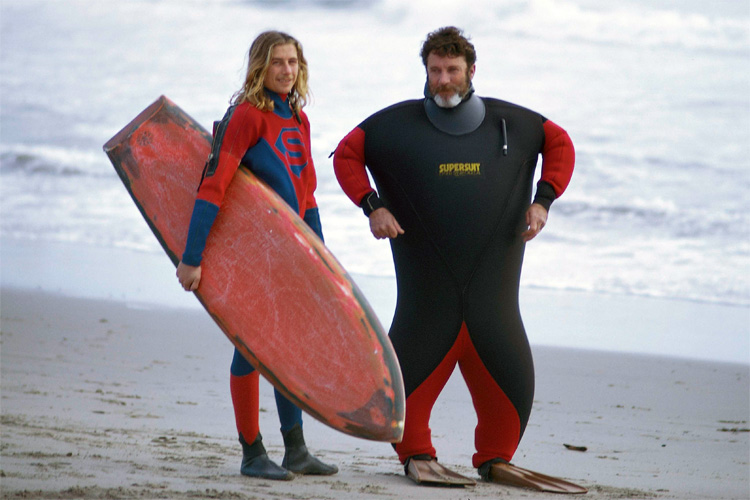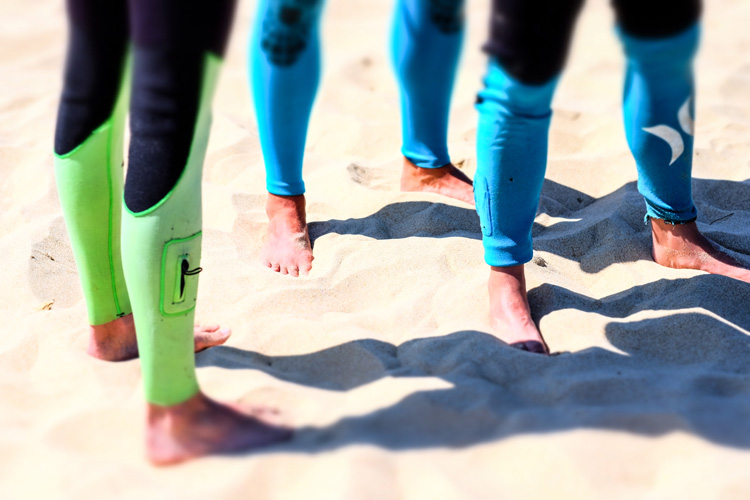Wetsuits are made of foamed neoprene, and they provide thermal protection against hypothermia. Let's take a look at how these second skins are made.
The wetsuit was invented in 1952 by Hugh Bradner, a physicist from the University of California, Berkeley. He wanted to help US Navy divers feel more comfortable underwater.
He realized that the trick to keeping human bodies warm in cool and cold ocean environments was to trap thin layers of water inside the synthetic rubber.
Thanks to gas bubbles inside neoprene, the material acts like an insulator. Body heat warms the water, insulating the user. And because neoprene is highly buoyant, it also helps users keep afloat.
Bradner tried to patent the wetsuit design, but the application was rejected because it was considered too similar to a flight suit. Nevertheless, he is widely considered the "father of the modern wetsuit."
When the US Navy declassified the project, there were already a few businessmen interested in exploring the idea. And they were all cold water surfers.
Morga, O'Neill, and the Meistrells
Bev Morgan (founder of Dive N' Surf), Jack O'Neill (founder of O'Neill), and Bill and Bob Meistrell (founders of Body Glove) began producing and selling their own wetsuit models.
The wetsuit industry has evolved a lot since the first models hit the market in the 1950s.
The neoprene panels were initially sewed with needles, then came seam tapping and seam gluing until the blind stitch method took over.
In recent years, several manufacturers have started developing eco-friendly alternatives to the standard petroleum-based neoprene, including natural rubber and limestone.

After two pieces of wetsuit material have been glued and bonded together with high pressure, a blind stitch allows the wetsuit seam to be strengthened while maintaining its watertight seal.
A blind stitch is created by a curved needle that hooks around the seam, only penetrating about 25 percent into the depth of the neoprene.
The thread is looped through, strengthening the two pieces of material.
But the key thing is that on the lower part of the seam, the original bond between the two pieces of neoprene remains untouched and watertight.
As a final step to increase strength and ensure that the seam maintains its watertight seal, a thin, stretchy, and durable tape made of closed-cell foam is applied on top of the blind stitch.
Modern Wetsuit Technology
Today, wetsuits are used by surfers, windsurfers, kitesurfers, divers, and many other water sports enthusiasts.
The most popular wetsuit brands for surfing are O'Neill, Body Glove, Xcel, Rip Curl, Billabong, Volcom, Patagonia, and Hurley.
The most common wetsuit thicknesses are 2mm, 3/2mm, 4/3mm, and 5/3mm. The first digit corresponds to torso thickness, and the second number indicates limb thickness.
Each wetsuit features between 15 and 30 neoprene panels, and all pieces fit together like a jigsaw puzzle. It takes roughly 45 minutes to make a wetsuit.
- Panels are heated with a hot press to slightly expand the neoprene;
- A decal of the company logo is fused to the panel;
- Rubberized glue is applied to the edges of the neoprene panel;
- The glue is pushed together at the seams;
- The glue dries for a few minutes;
- The seams are blindstitched from the inside out;
- A hot roller adds nylon tape to the back of the seams for extra waterproofing;
- A zipper is added to the wetsuit;
So, what makes a good wetsuit? The answer is not complex - the quality of the neoprene, the precision of the gluing and blind stitching techniques, the finishing touches, and the quality control stage.
The rest is marketing hype.
Learn how to sew and repair a wetsuit tear. Discover the differences between a wetsuit and a drysuit.
